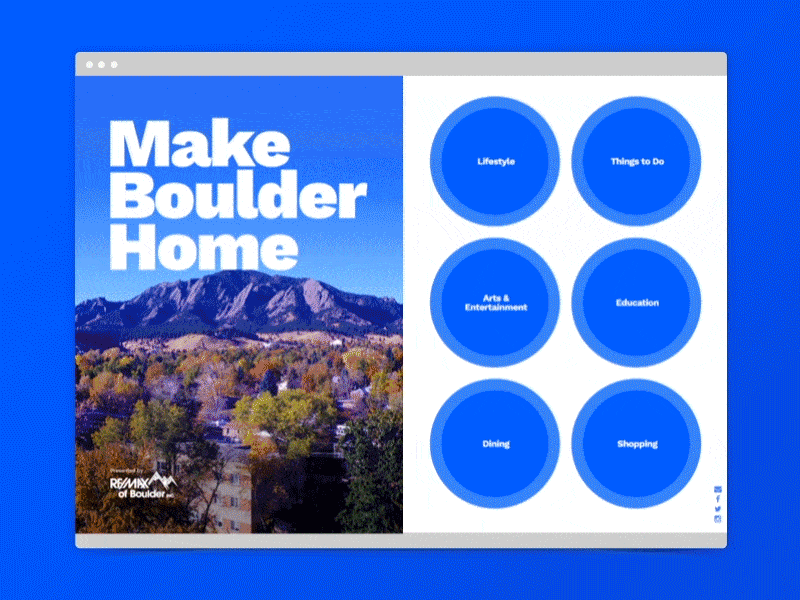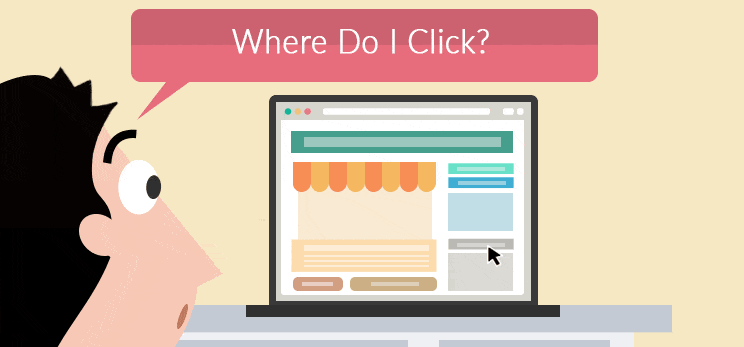
Artists and Photogs: Improve Your Website Content with These 7 Tips from a Pro Copywriter
The first key to making your website work better for you is to understand that web content is different from other kinds of written content.
And as an artist or photographer writing your own web copy, it’s important to know the difference, especially if you’d like to get more clients, customers and sales as a result of your online presence.
You may think “Duh,” of course web content is different, but I’ve had dozens conversations over the last 2-3 years with smart online business builders who were either curious about the difference between web content and other kinds of writing, or who didn’t understand there was one.

One newspaper columnist with 30 years of experience asked me how writing his weekly column was any different than writing for the web, and the PR Director of a large organization looking to hire a writer for a big web copy project bemoaned the fact that of all the experienced writers she’d interviewed recently, not one had web writing skills.
So yes, there is a difference between writing for the web and writing other kinds of content, and it’s important to understand what that difference is so you can get the most traction from your own web writing and marketing.
So for you artists and photographers writing your own copy, I’ve got 7 tips you can implement today to improve your web content to get better results in your business.
But first we need to understand how people look for information on the web.
HOW PEOPLE READ ON THE WEB

Web users are busy; they want to get the straight to the facts. When they land on your website, they’re scanning the page. (Research on how people read websites found that 79% of users scan web pages, just 16% read word-for-word.)
The thing to keep in mind is that people on the web are typically in a hurry; they’re searching for answers to questions and solutions to problems. They quickly skim for information that meets their specific needs.
And because web users don’t know who is behind the information on a web page, it’s also important to use indicators that prove you’re credible. Excellent writing is one of the things that confers trustworthiness online.
I know nothing kills credibility faster for me than poor writing. Let’s be honest: bad content clumsily organized reflects poorly on your brand.
7 WAYS TO IMPROVE YOUR WEBSITE CONTENT TODAY FOR BETTER SALES
Let’s start at the top.
1. Tell readers what they’re getting in the headline

If you keep up a blog on your site, this applies to your blog headlines, but it also applies to the headlines on each of your web pages. Each page should have a headline to position the information on that page; the headline serves as a guidepost to let your web visitors know what they’ll find there.
For example, I could have called this blog post “The Difference Between Web and Print Content,” or some other dull and boring thing like that, but would you be reading it now if I did? I bet not.
If you want to see examples of compelling headlines that get the job done, check out your favorite magazines. Magazines spend thousands of dollars and do exhaustive research to figure out which headlines grab readers, so modeling their tone and structure will get you off to a good headline-writing start.
2. Make your website content about the reader

Successful web content (meaning: it helps you get more customers and make more sales) is not about your business per se, it’s about the “solutions” you can provide (in this case, your photography or art) for the potential client or customer who lands on your website. Company-centric web content will turn off readers.
What that means is that once you get clear on why your clients buy from you, you use that information to write the content for each page on your website.
Of course your web copy is going to be about your art, your background, and what you have on offer for buyers, but first and foremost it needs to clearly convey that you understand your audience and what they’re looking for.
So talk about your art business as if it’s a lovely gift you’re presenting to your web visitors that says, “Open me now, I’m exactly what you’re looking for!”
Let’s look at two examples from the world of wedding photography:
(In the first example, I’ve changed the name of the business and a couple of identifying details so as not to be ungracious and call anyone out.)
At ABC Photography, we specialize in family beach portraits, beach wedding photography, bridal, maternity, newborn and senior portraits. Our goal is to provide the highest quality photography available.
With over a decade of professional photography experience, we have the skills, reliability and experience needed to capture your most precious memories. If you are interested in professional photography services, please contact us to discuss your project or receive a quote.

Ok, that’s terribly boring copy (another no-no), but the main problem is that its central focus isn’t on the audience or potential customer, it’s on the company.
Compare that to this:
Head Over Heels. Hi there, lovebirds. Congratulations! After the question has been popped, it’s time to eat, drink and be married. Let’s talk about The Wedding Day. Here comes the bride and here come the cliches: “This is one of the biggest days of your life.” “When the cake has been eaten, all you’ve got is the photos.” When it comes to photography, we try to avoid clichés at all costs, while honoring the truth behind them.
For us, this isn’t just another wedding; it’s your wedding. We look for the thoughtful touches and shared moments that tell your story. Our photos emphasize the emotions, details, and moments that make your wedding uniquely you–your grandfather’s cuff links nestled in your bouquet; your mom’s reaction when she sees you in her old wedding dress; your end-of-the-night-get-away in a classic vintage car.
(This copy comes from Millie Holloman Photography, a great example of a photography website that combines beautiful images with effective web copy that makes an emotional connection with potential clients, which is just want you want your web copy to do).
The copy in example #2 connects with the reader – it speaks to what’s important to them as a potential photography client – “thoughtful touches and shared moments that tell your story” – and avoids the worn-out clichés of standard wedding photography web copy.

Contrast that to the company-centric copy from the first example, which focuses almost wholly on the company, i.e., “our goal,” “we have,” “we specialize,” etc.
It may be a little less true in the art business than it is in standard small business, but generally, people don’t really care who you are as much as they want to know how you can help them, entertain them, or add beauty to their lives. They’re seeking the answer to the question, “WIIFM?,” meaning, “What’s in it for me?”
3. Lead with benefits, not features

You’ve probably heard the saying, “People buy based on emotion and justify based on logic” more than once by now. That’s because it’s true.
The goal is to connect with your audience on an emotional level, and you do that by selling benefits, not features. Features have their place, but’s it’s important to lead with benefits.
A feature is something your product or service is or contains, a benefit is what the product or service does or provides – the desirable results.
For example, features are things like print size, or framing options, or the kind of paper something is printed on; benefits are things like the satisfaction a collector will get from owning a one-of-a-kind piece of art, the joy she experiences from looking at it hanging perfectly over the sofa in the living room, etc.
One way to make sure you’re focusing your web copy on benefits is by painting a picture of your potential customer’s ideal outcome. Now granted, this may be more challenging to do with art than with products or services, but it can be done.
As in the photography example above: “the thoughtful touches and shared moments that tell your story,” and photos that capture “the emotions, details, and moments that make your wedding uniquely you,” as opposed to something like, “our photographers are the most skilled and experienced working in the wedding photography industry today and use only the most advanced technology and equipment to capture your special moments.”

Think about your laptop. Its features are things like “Wi-Fi enabled, widescreen optimized, lighting-fast processor,” etc. But if you were selling its benefits, it might look something like this: “Don’t get tied down to an office like the rest of the 9-5 worker bees, get your work done quickly and efficiently from anywhere on Earth with the insert name of laptop here. For ultimate time and work freedom,” or something similar. (Think of how Apple sells its products – in fact, go to the Apple website and spend some time reading through the product descriptions if you want to see how leading with benefits works for product copy.)
Remember, “Facts tell, benefits sell.”
4. Make it short and to the point

As best you can, you want to get to the point quickly. Web users are on a specific mission, and if they land on your site and see they’ll have to dig through long-winded, jargon-filled web copy to find the answer to their question, they’re going to hit the back button as fast as they can.
Long-winded copy usually happens when the business owner doesn’t have a clear understanding of what their target audience really wants or needs to know, so the tendency is to mention everything related to the business in any way, or trot out lots of credentials, etc.
You can avoid this by getting really clear on what your target audience wants.
If you spend some time thinking about your ideal customer’s ideal outcome, even if that outcome is simply to own a piece of original art that brings them joy, you’ll be able to get right to the point and convey how your art or photography business can make their desired outcome a reality.
5. Make it scannable and easy to read

Remember, 79% of web readers are scanning, not reading word for word, so create your content with this in mind. Think of it as the “bread crumb” approach – you lead readers organically through your content with markers like headings, subheadings, bolded text and hyperlinks to highlight the really important parts.
Use short, 2-3 sentence paragraphs, and keep it to one idea per paragraph.
When writing blog posts, try using an inverted pyramid structure where you start the content piece with the conclusion, the way I did with this post:
The first key to making your website work better for you is to understand that web content is different from other kinds of written content. And as an artist or photographer writing your own web copy, it’s important to know the difference, especially if you’d like to get more clients, customers and sales from your online presence.
6. Make it conversational, not boring (no jargon or formal-speak)

Write the way your target audience thinks and speaks. You can do this by paying attention to your current clients and customers and noting the way they describe their challenges related to the thing you sell.
There’s no need to write web content as if it were an instruction manual, yet I see this all the time. Inject some personality into it. If you know what your target audience wants, and how they think and speak, this won’t be difficult.
This is obviously going to depend on your audience – an accountant is going to write web content differently than a yoga instructor, a photographer of golf courses differently than a fine artist specializing in religious imagery. But the end result should be the same – your web content speaks directly to the desires, wants and needs of your ideal client or customer and makes them eager to do business with you.
7. Include a clear call to action

A call to action is an instruction in your copy – whether that copy is on your website, in your newsletter, on your blog, or in your ads and other sales material – that directs your audience to take a specific action.
After your readers finish reading a particular piece of content on your website, there’s something you want them to do next – usually some action that gets them closer to becoming a customer. Say, clicking on a link to read more about your work or view your galleries, calling to ask for more information, visiting your store, or completing a sale.

A strong call to action is essential for making this happen. To make it more powerful, you can convey a sense of urgency with phrases like, “now,” “today,” and “for a limited time,” when it’s appropriate.
Call to action examples:
- “Come in today for 30% off”
- “Buy now”
- “Sign up for our newsletter today and join the ‘Insiders Club’ for special subscriber-only deals”
- “Mention this blog post for 25% off when you buy your first print, for the next 7 days only”
- “Follow us on Twitter for special promotions and behind the scenes shenanigans”
Rules are meant to be broken under the right circumstances, and you won’t always be able to follow all the advice here when creating your web copy, but apply these 7 tips where appropriate today to start getting better results in your business.
And there you have it. 7 things you can do today to improve your web content and get more clients, customers and sales.
Sell More Art Online
If we can't teach you, no one can!


